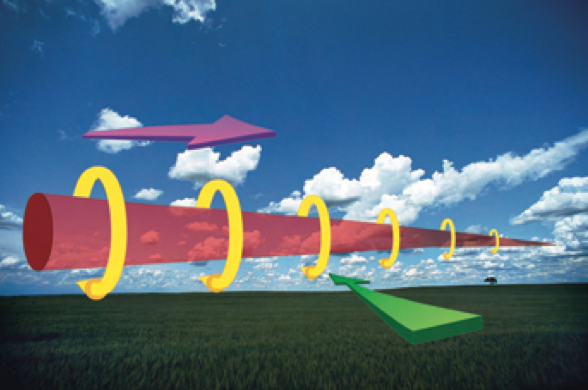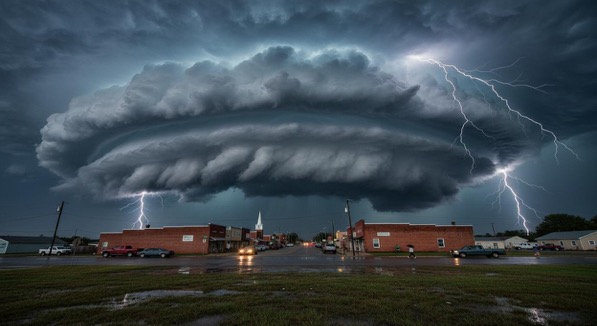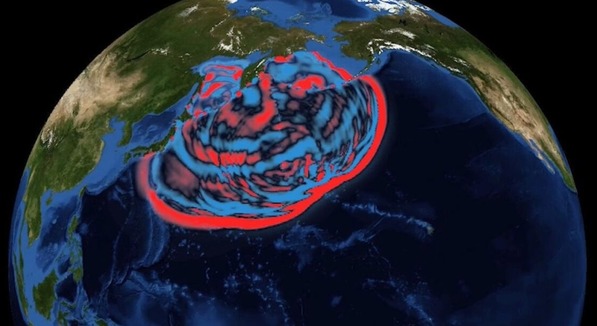The formation of a tornado can be broken down to three stages: 1) low level horizontal spin, 2) updraft tilting, and 3) vertical rotation.
Stage 1 (Low Level Horizontal Spin)

Before thunderstorms develop, winds change direction and increase in speed with altitude. This creates an invisible, horizontal spinning effect in the lower atmosphere
Stage 2 (Updraft Tilting)

Rising air within the thunderstorm updraft tilts the rotating air (stage 1) from horizontal to vertical.
Stage 3 (Vertical Rotation)

An area of rotation around 2-6 miles wide now extends through much of the storm. Most tornadoes form within this area of strong rotation.
Related Articles:
- Understanding National Weather Service “Severe Weather Outlook”
- How tornadoes form
- Tornado facts
- Tornado Safety
- Lightning Safety
- Flood Safety
- Tornado Myths
- Lightning Myths
- Life cycle of thunderstorms
- Criteria for a tornado warning
- Criteria for a severe thunderstorm
- Difference between flood and flash flood
- Sign-up to receive real-time tornado email and text message alerts



